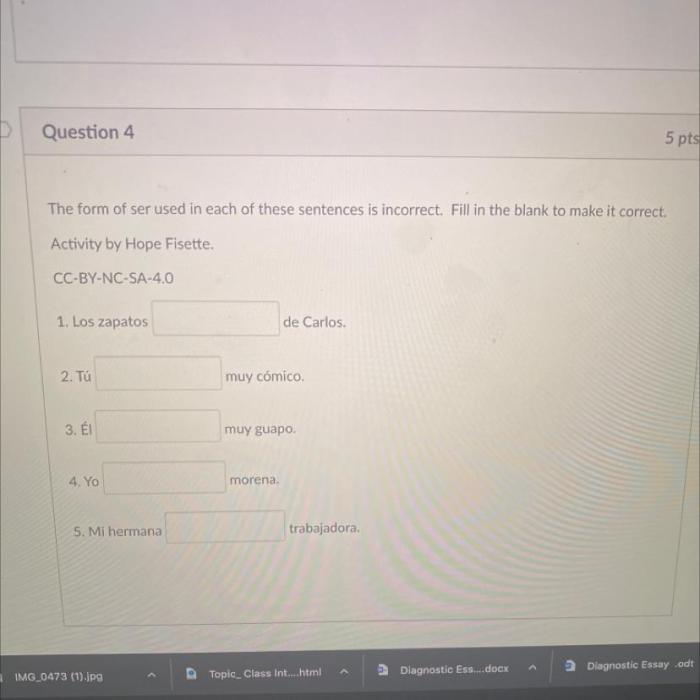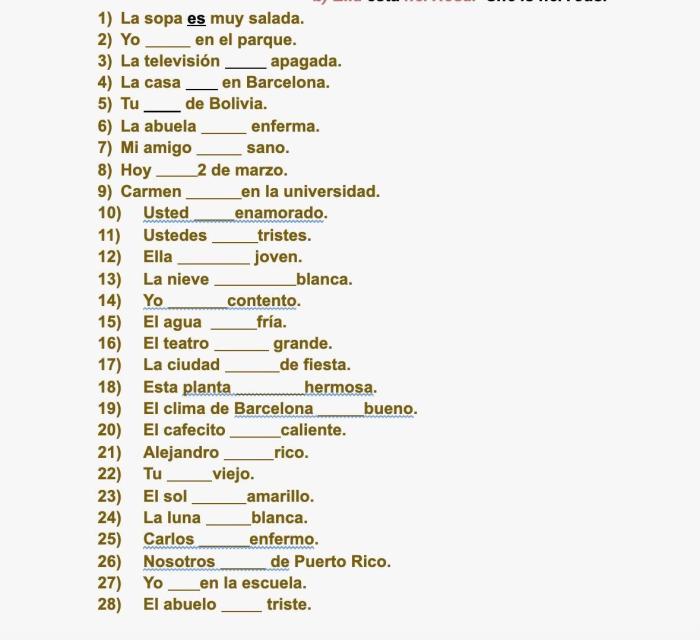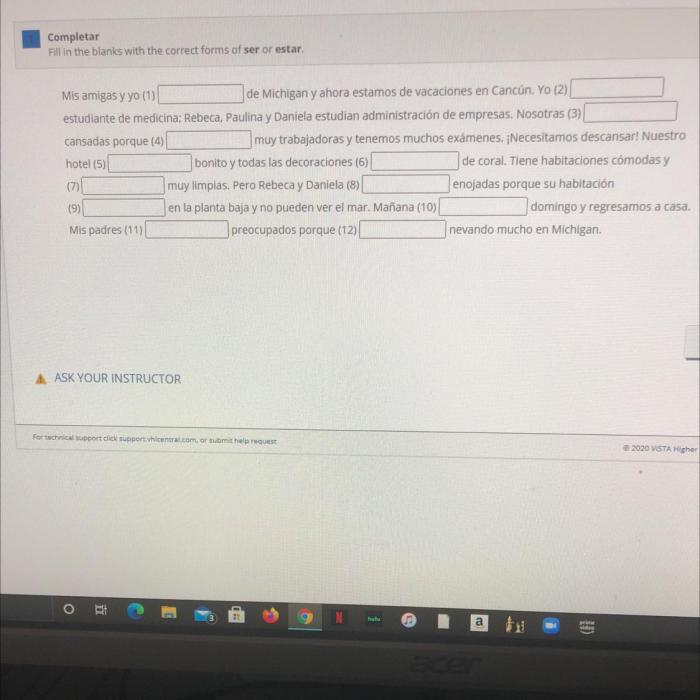Select the correct forms of ser to complete jorge’s introduction – In Spanish introductions, selecting the correct forms of “ser” is paramount. Choosing the wrong form can lead to grammatical errors and misunderstandings. This guide will delve into the intricacies of “ser,” ensuring you make a strong first impression in your Spanish interactions.
Understanding the types of “ser” and their functions is crucial. “Ser” can denote existence or identity, and its form must align with the subject’s person, number, and gender. By mastering these rules and practicing with interactive exercises, you’ll gain confidence in using “ser” effectively.
Correct Forms of “Ser” in Spanish Introductions

Selecting the correct forms of “ser” in Spanish introductions is crucial for clear and accurate communication. Common mistakes arise when the wrong form is chosen, leading to misunderstandings or grammatical errors.
Understanding the types of “ser” and their functions is essential. “Ser” can act as a verb of existence, indicating the presence or location of something, or as a verb of identity, equating two entities.
Types of “Ser”
- Verb of Existence:Indicates existence or location (e.g., Soy de España, Estoy en casa)
- Verb of Identity:Equates two entities (e.g., Yo soy profesor, El libro es rojo)
Agreement with Subject
The form of “ser” must agree with the subject in person, number, and gender. The following table Artikels the correct forms:
| Subject | Singular | Plural |
|---|---|---|
| 1st Person | soy | somos |
| 2nd Person (formal) | es | son |
| 2nd Person (informal) | eres | sois |
| 3rd Person (masculine) | es | son |
| 3rd Person (feminine) | es | son |
Examples and Exercises, Select the correct forms of ser to complete jorge’s introduction
To practice selecting the correct form of “ser,” refer to the following examples and exercises:
- Correct:Yo soy de México.
- Incorrect:Yo eres de México.
- Correct:El libro es interesante.
- Incorrect:El libro son interesante.
Interactive Exercise:Choose the correct form of “ser” to complete the sentences:
- Yo _____ de España.
- El coche _____ azul.
- Tú _____ mi amigo.
- Nosotros _____ estudiantes.
- Ellas _____ muy simpáticas.
Additional Notes
Some exceptions to the rules of “ser” usage in introductions include:
- When the subject is a noun phrase, “ser” is always in the third person singular (e.g., El problema es la pobreza).
- When the subject is a pronoun, “ser” is not used (e.g., Yo hablo español).
To memorize the different forms of “ser” and their uses, consider using flashcards or mnemonic devices. Consistent practice and exposure will enhance your accuracy in selecting the correct form.
Questions and Answers: Select The Correct Forms Of Ser To Complete Jorge’s Introduction
Why is it important to use the correct form of “ser” in introductions?
Using the correct form of “ser” ensures grammatical accuracy and conveys a professional and polished image.
What are the common mistakes people make when choosing the form of “ser”?
Mistakes often occur when failing to match the form of “ser” with the subject’s person, number, or gender.
How can I practice selecting the correct form of “ser”?
Interactive exercises and examples can help you develop proficiency in using “ser” in introductions.

